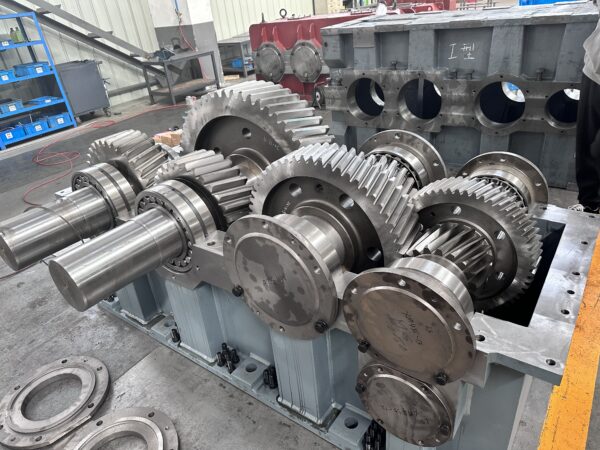As winter approaches with its lower temperatures and harsher environmental conditions, proper maintenance of reducers becomes crucial to ensure their reliable operation and extend their service life.

As winter approaches with its lower temperatures and harsher environmental conditions, proper maintenance of reducers becomes crucial to ensure their reliable operation and extend their service life. Here are some essential maintenance tips for reducers during the winter season.
Firstly, pay close attention to the lubrication system. In cold weather, the viscosity of lubricating oil increases significantly, which can impede the normal operation of the reducer. It is advisable to replace the lubricant with a type that has better low-temperature fluidity before winter arrives. This specially formulated oil can ensure smooth meshing of gears and reduce friction losses even in freezing temperatures. Additionally, check the oil level regularly to make sure it remains within the appropriate range. If the oil level is too low, it may lead to insufficient lubrication and accelerated wear of components.
Secondly, protect the reducer from extreme cold. Consider installing insulation materials around the reducer housing if it is operating in an unheated environment. This can help maintain a relatively stable internal temperature and prevent components from being damaged by rapid temperature changes. For reducers installed outdoors, a weatherproof cover can shield them from snow, ice, and wind, reducing the risk of water ingress and corrosion.
Another important aspect is the inspection of seals and gaskets. Cold temperatures can cause materials to contract, potentially leading to gaps in seals and gaskets. Regularly inspect these components for any signs of leakage. If any damage or wear is detected, replace them promptly to maintain the integrity of the reducer’s enclosure and prevent contaminants from entering.
Furthermore, be cautious about the starting process. In extremely cold conditions, the reducer may experience difficulties starting due to the increased viscosity of the lubricant and the stiffness of components. Before starting, it is recommended to preheat the reducer gently, if possible. This can be achieved by using heating pads or other suitable heating devices. By warming up the reducer, you can reduce the starting torque required and avoid sudden stress on the gears and bearings.
In addition, during routine inspections, pay extra attention to the bolts and fasteners. Cold weather can cause metal to contract, and loose bolts may lead to misalignment or vibration issues. Tighten any loose bolts to the specified torque values to ensure the structural integrity of the reducer.
Finally, keep records of all maintenance activities. This includes the date of lubricant replacement, inspection results, and any repairs or replacements made. These records will serve as a valuable reference for future maintenance and troubleshooting, helping you identify patterns and potential problems early on.
By following these winter maintenance guidelines, you can help your reducers withstand the challenges of the cold season and operate smoothly, ensuring the continuous and efficient running of your machinery.